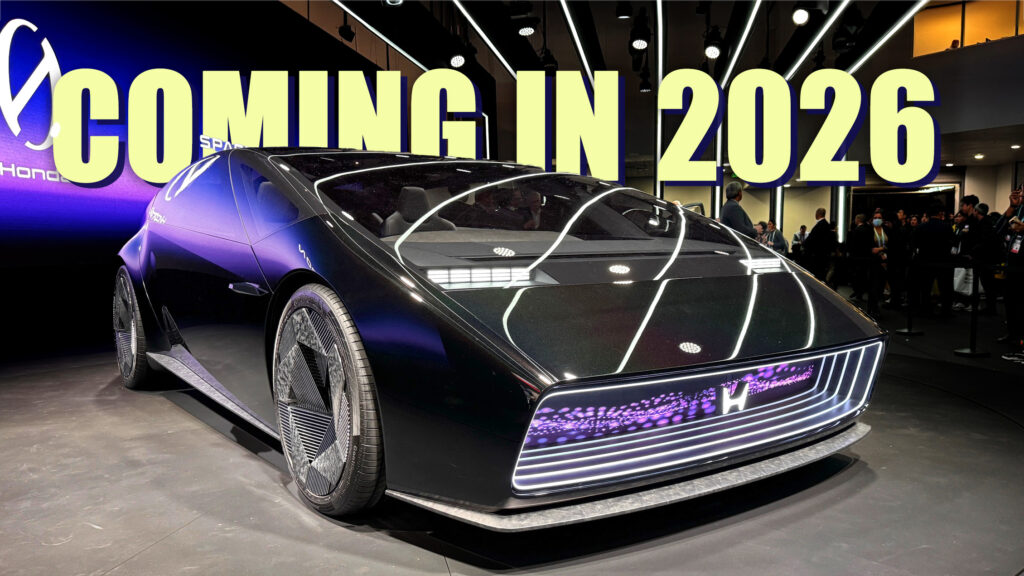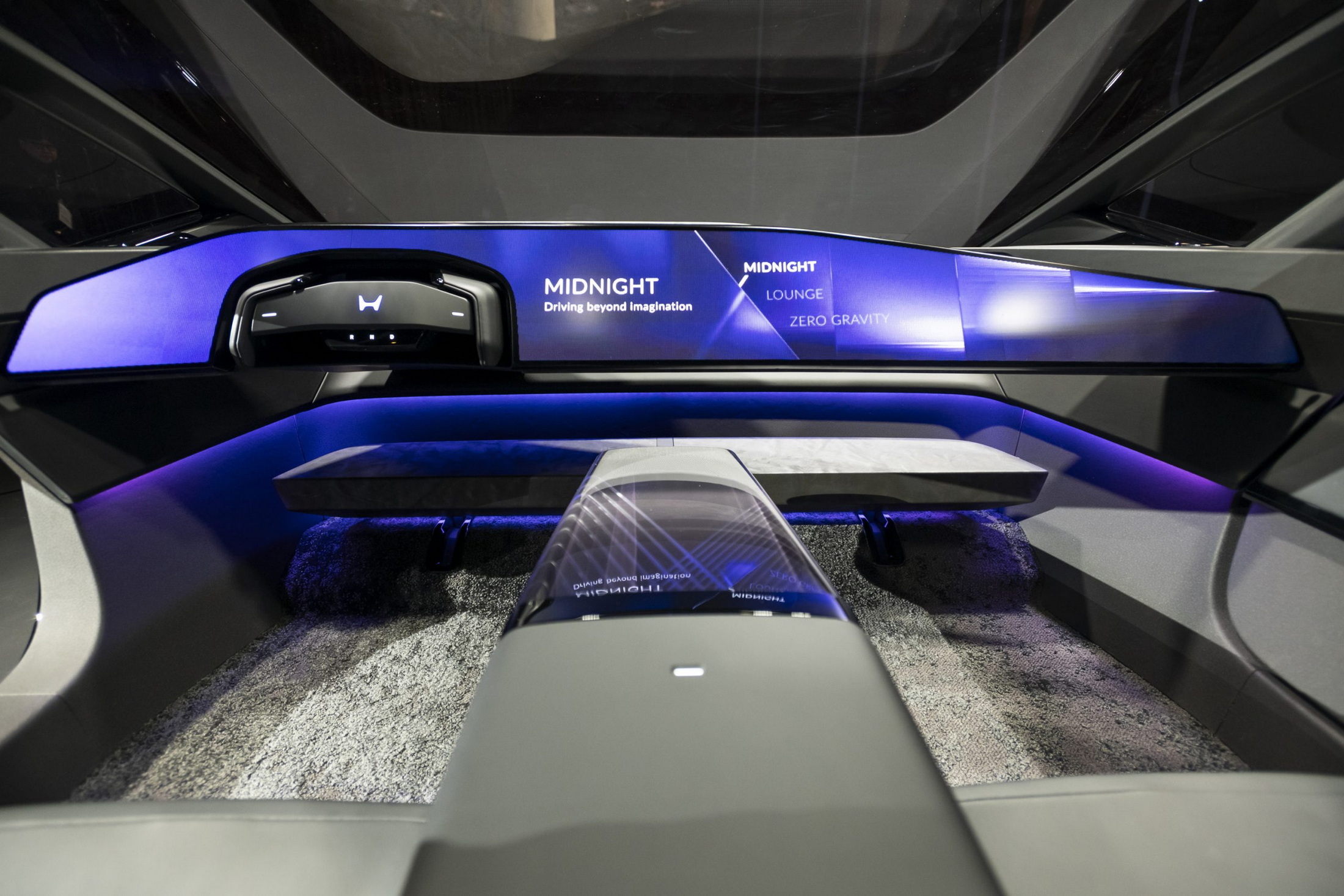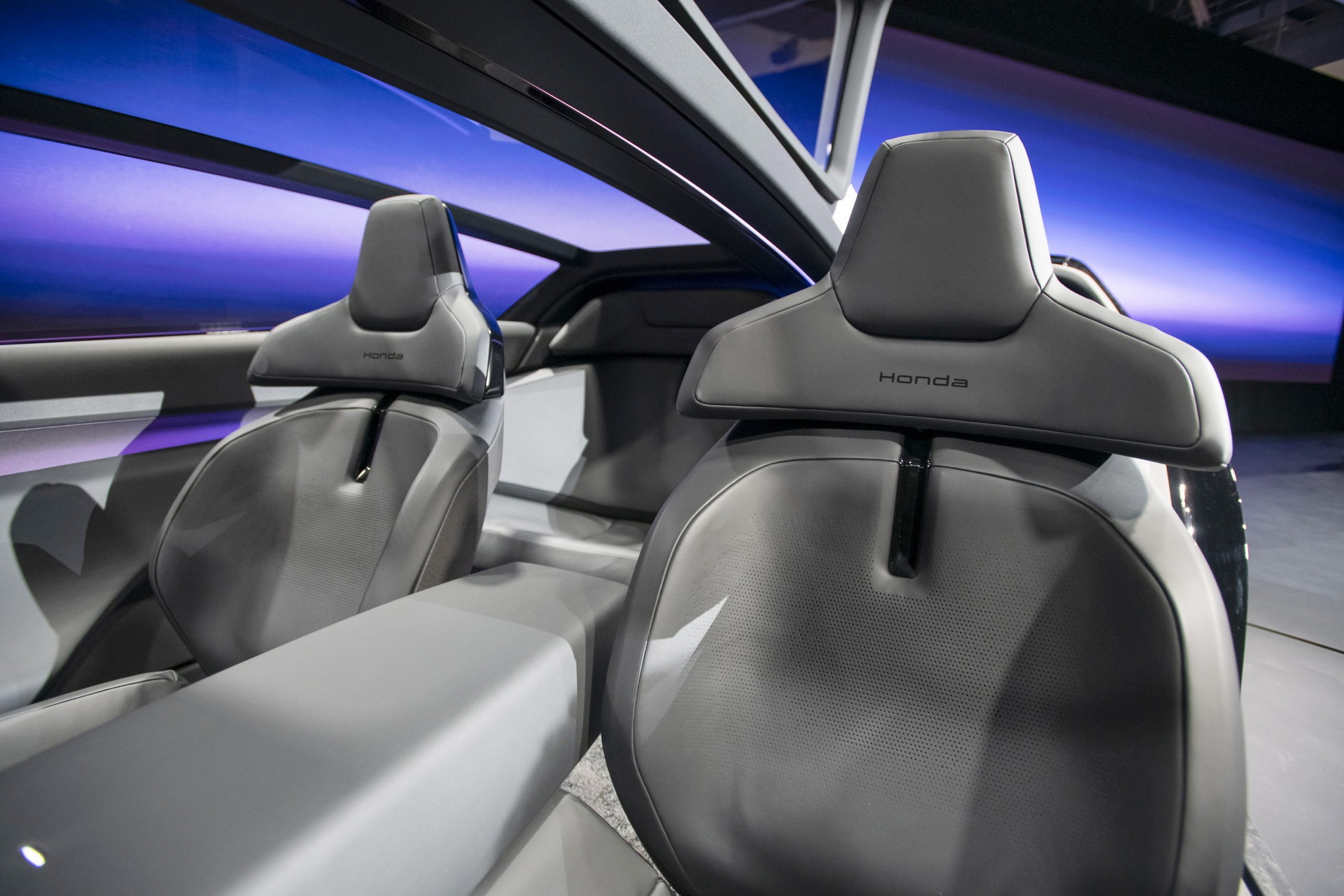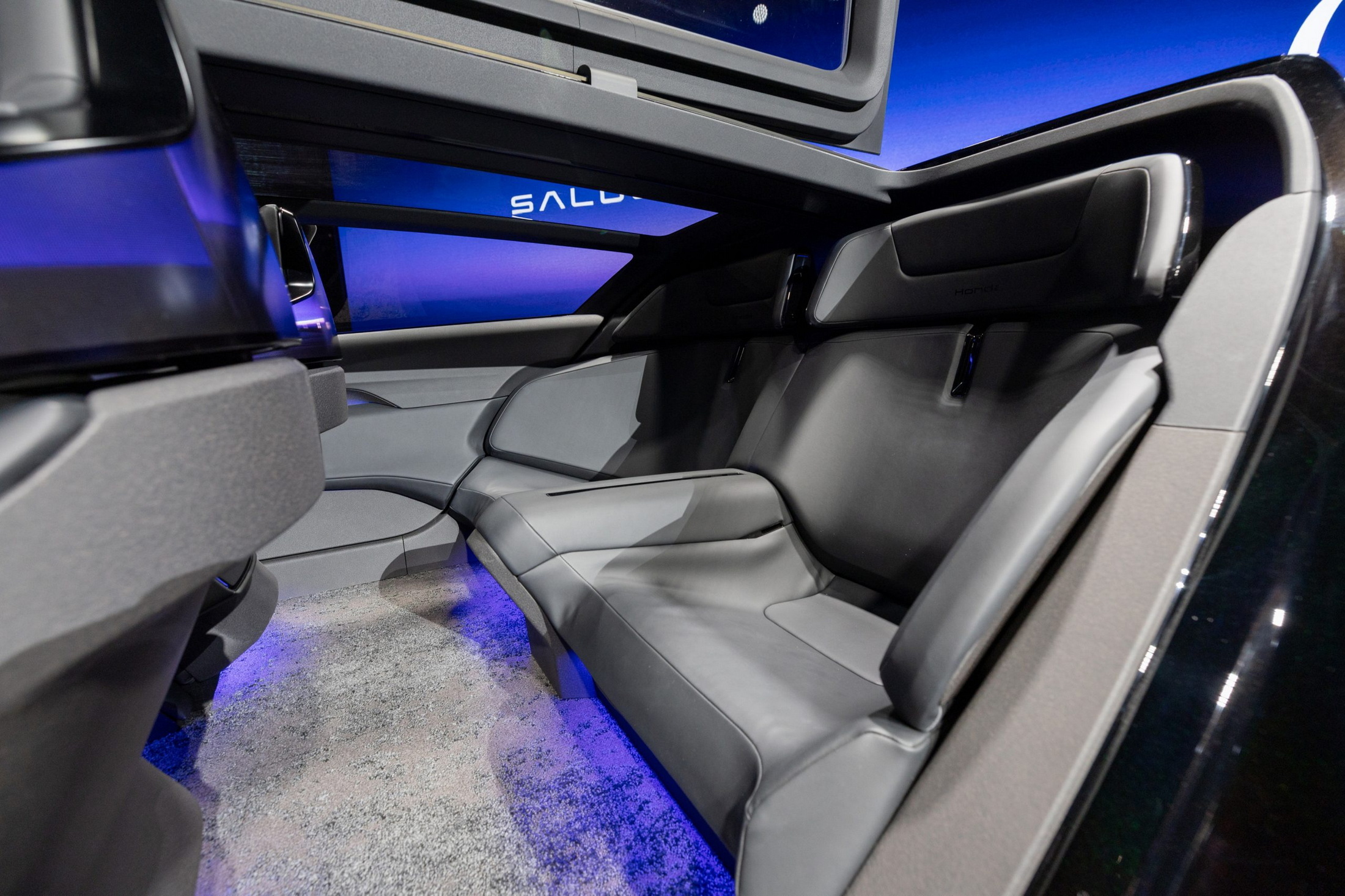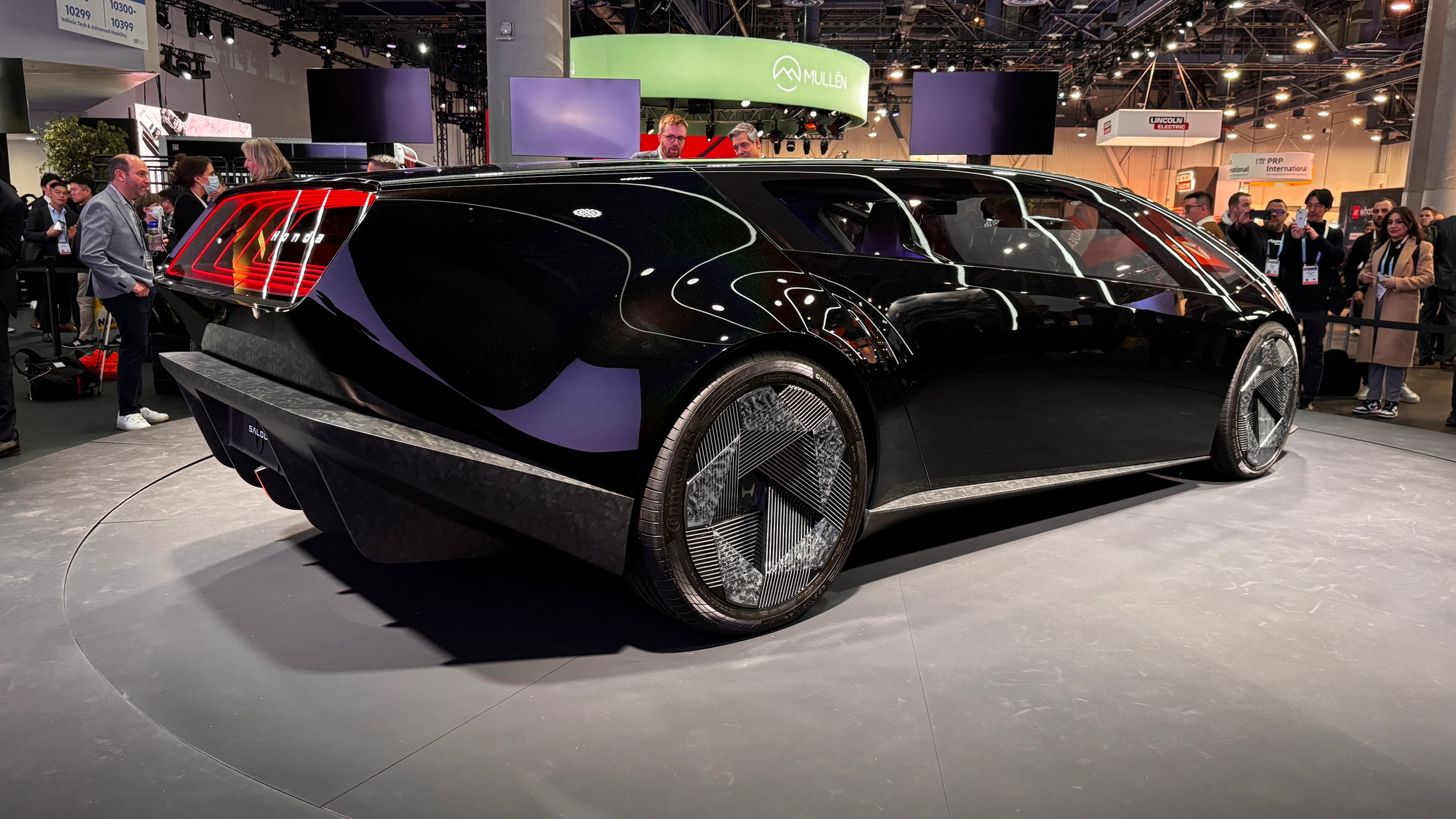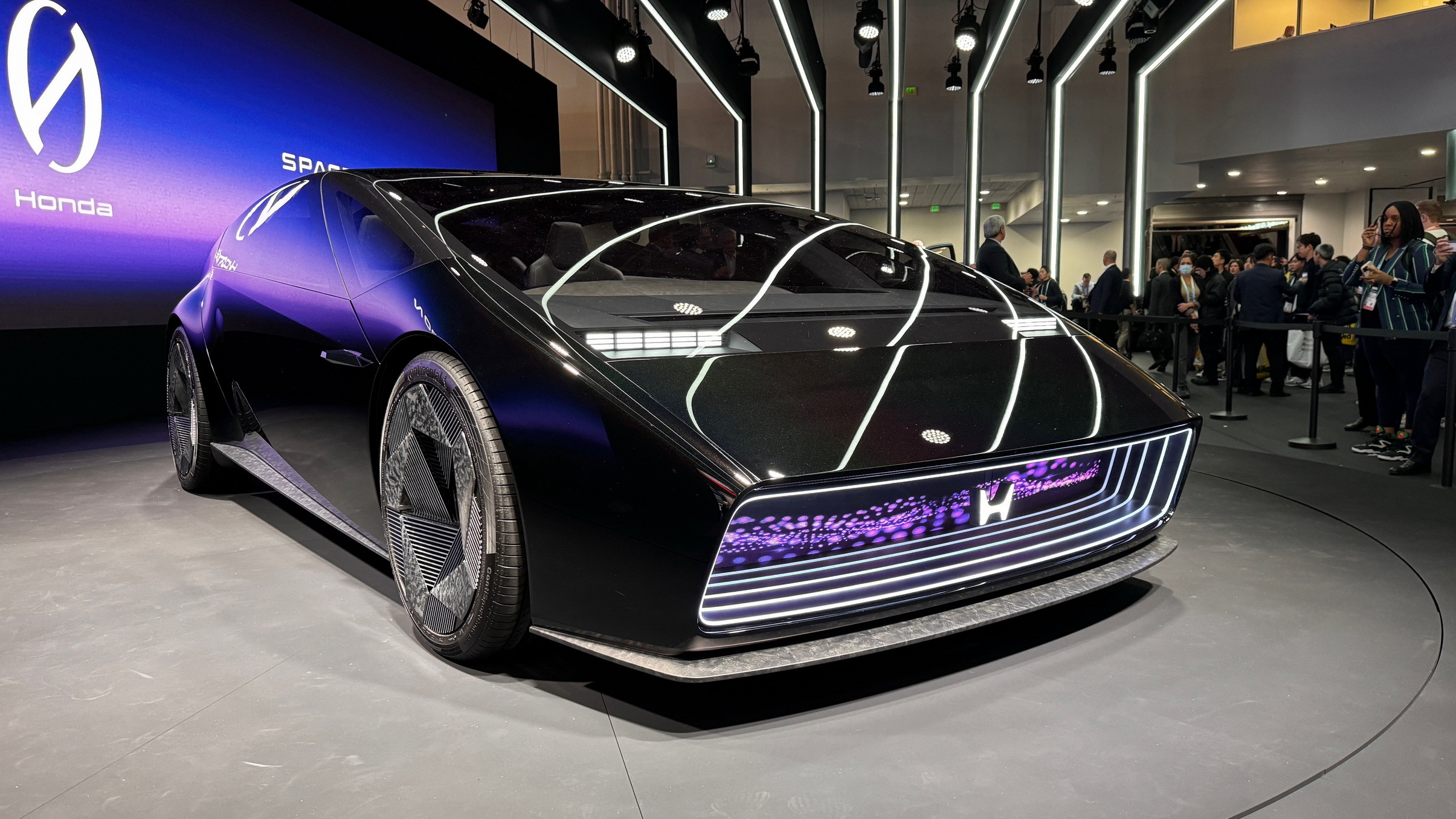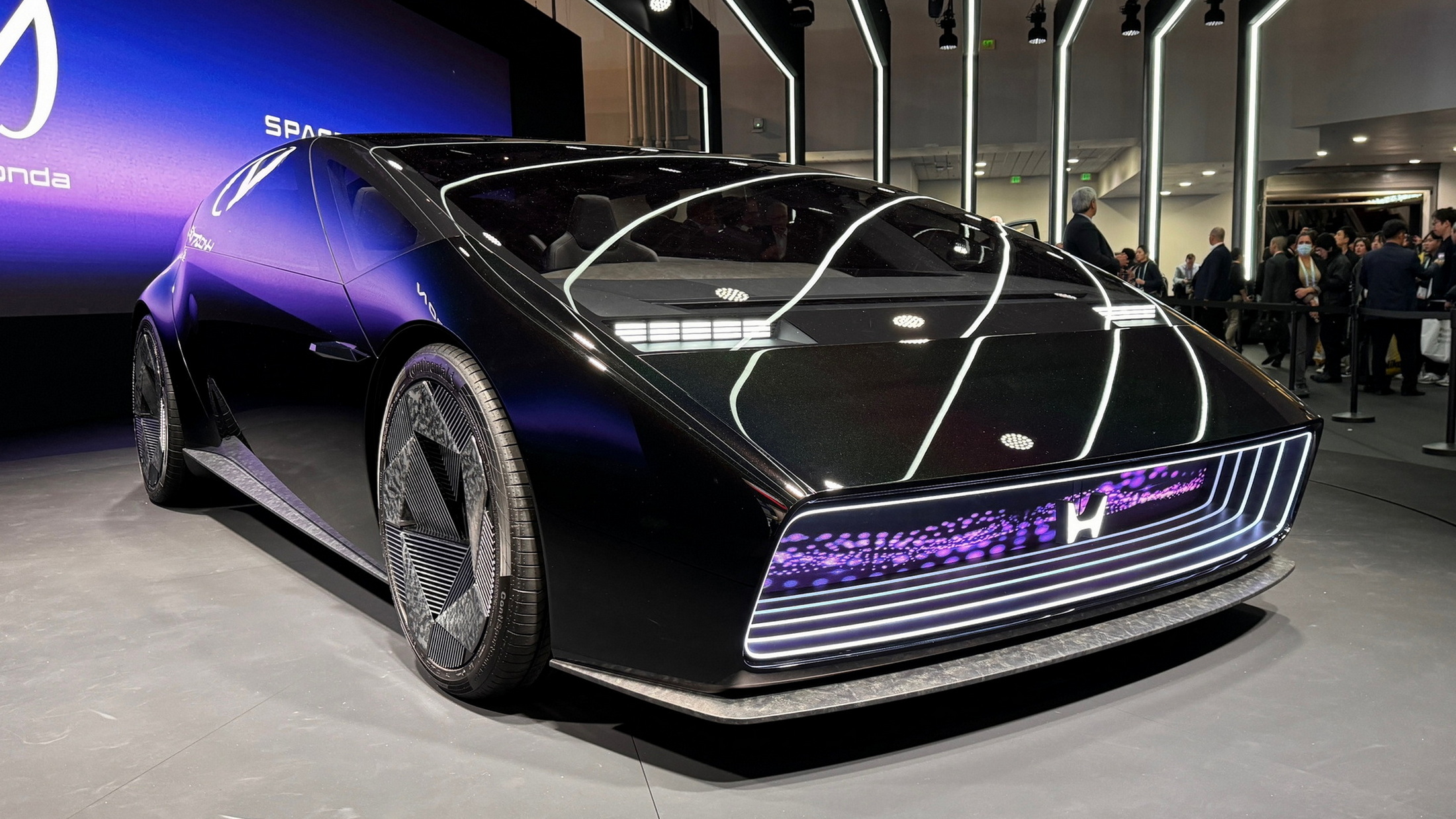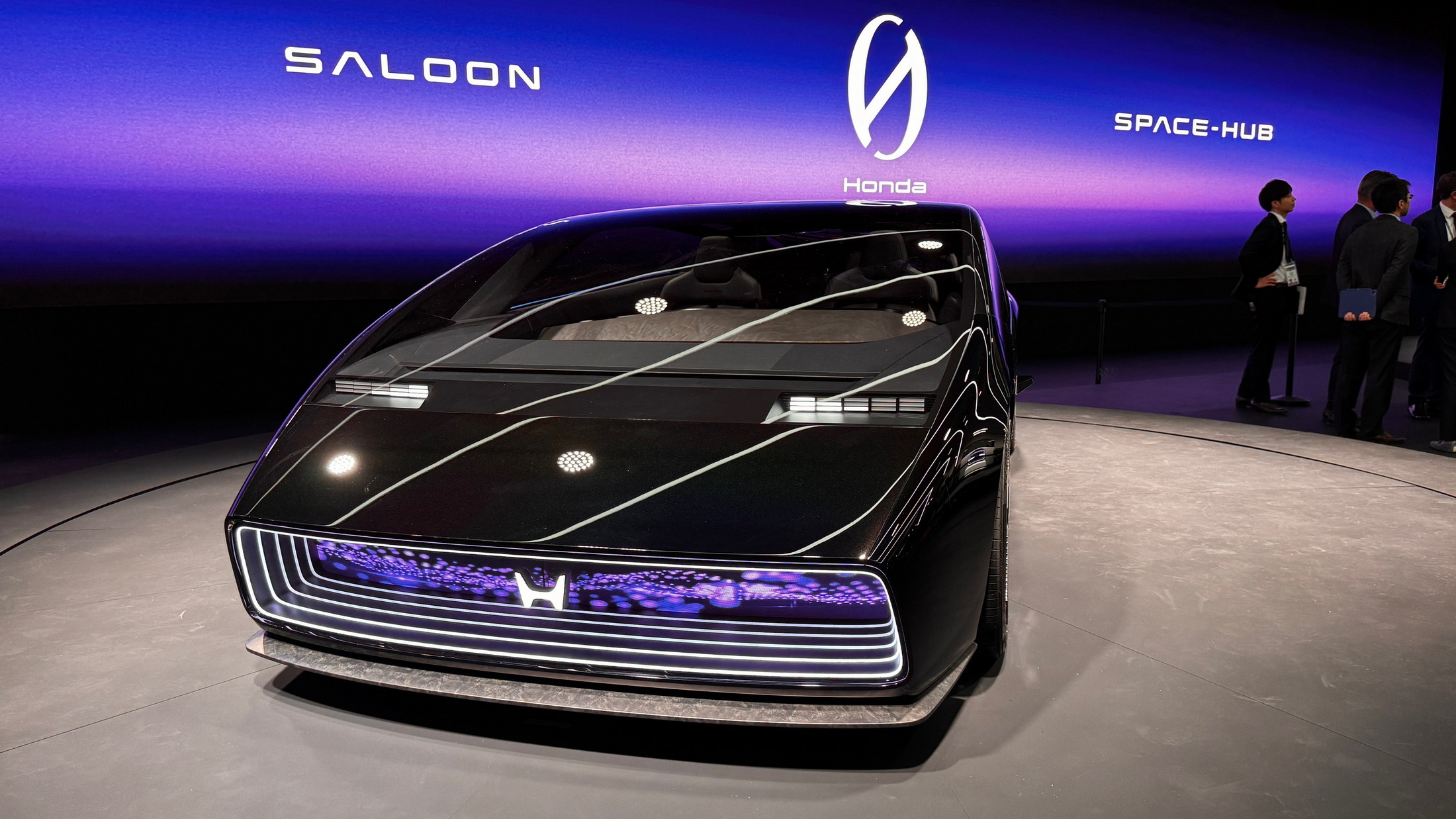Like most concept cars, the Saloon EV presented by Honda at CES includes features that won’t make it into production. For instance, Honda acknowledges that the gullwing doors and the funky interior aren’t really practical for production vehicles. However, Honda is committed to making the production version of the vehicle closely resemble the vision showcased by the Saloon concept when it goes on sale in 2026.
The first production vehicle in the Japanese automaker’s 0 Series EV lineup, the futuristic-looking Saloon was developed with a focus on efficiency, engagement, spaciousness, autonomy, and, it turns out, radical design.
The 0 Series represents Honda’s commitment to “creating outstanding projects from zero, unconstrained by existing assumptions,” as explained by Katsushida Okuda, the head of Honda Europe, to Autocar. With this initiative, the automaker is essentially “going back to the starting point of Honda as an automaker and creating EVs from scratch.”
Read: Honda’s Wedge-Tastic Saloon Concept Hints At A 2026 Production EV
This implies that Honda is prepared to embrace a bold design language, and the production version of the Saloon will “90 percent keep this appearance”, as stated by Toshinobu Minami, the concept’s designer.
While the Saloon’s design has drawn comparisons to various vehicles – we described it as evoking memories of ’70s wedge-shaped concept cars, while some of our readers also noted the front end’s resemblance to the Nissan Max Out Concept – Minami said that the design wasn’t directly inspired by any specific historic vehicle.
“We rethought the design from a human-centric viewpoint and this is what we landed on,” he said. “We’re not particularly aiming for this shape, but we’re trying to create the shape of the function while making it emotional.”
The wedge-shaped silhouette with the flat rear end also emphasizes the low-slung profile of the EV. Honda has made efforts to reduce the size of the batteries powering the Saloon as part of its strategy to make the 0 Series vehicles lighter and more efficient. While the Saloon is projected to have a range of more than 300 miles (483 km), Honda aims for a slim floor to maximize interior space and enhance the overall design.
Even though the automaker believes that solid-state batteries are still a few years away, Honda said that new battery management software will help earn range gains, and reduce degradation. It’s aiming for its batteries to maintain 90 percent capacity after 10 years in service.
While the most extravagant auto-show features will be removed, as mentioned earlier, there’s a possibility that the forward display could be retained. However, Honda intends for this screen to serve a practical purpose on the road, rather than just being a showpiece. They are actively exploring ways to make the large screen useful in real-world driving scenarios.
It will be interesting to see if that includes communicating with other road users, as has been previously attempted by other automakers. That could be important for the brand, which is working on its own autonomous technology that it plans to install in 0 Series vehicles.
That’s a lot to manage for the Saloon concept, but Honda said that the final design has already been signed off on, and that the vehicle is testing in the U.S. A full reveal or possibly a near-production study as Honda usually does, is expected as early as 2025, with sales set to commence first in North America in 2026, followed by Japan, Asia, Europe, Africa, the Middle East, and South America.




